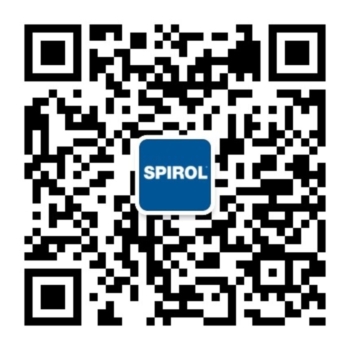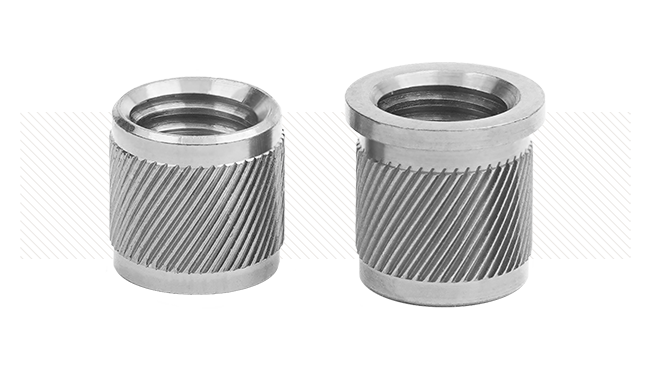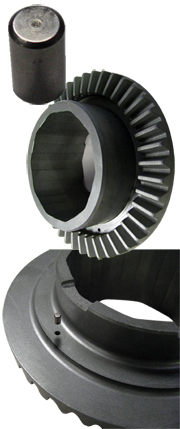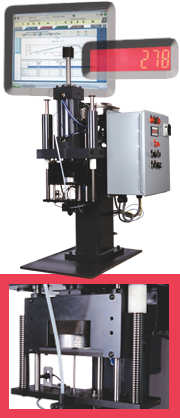Locator Pin in High Quality Gears
Application:
A manufacturer of high quality gears was experiencing difficulty installing a locator pin in a critical area. The pin also tended to work its way out of the assembly during use. It was vitally important that the pin was secured in the hole such that it would not fall out under extreme operating conditions.
A combination of factors contributed to the installation problem and pin walk-out such as the hole size, material hardness, surface finish within the hole, and sharp edges at the hole’s entry point.
Customer design-of-experiments and analysis indicated that there was a direct correlation between pin performance and installation force. If the force was too high, the pin or gear incurred damage. If the force was too low, the pin was at risk for walking out during the assembly life.
SPIROL Solution:
SPIROL recommended that our standard Model CR Pin Insertion Machine be equipped with Force Monitoring. The integrated load cell was programmed with the minimum and maximum insertion force required to ensure defect free installation and a secure assembly. When an insertion was outside of the established parameters, the machine would shut down and a light flashed indicating that investigation was necessary. At this point the errant assembly would be removed, and a Supervisor or Manufacturing Engineer had to over-ride the machine before the operator could continue. Production would resume with no risk of introducing a bad assembly into the field.
Force Monitoring
The Model CR, a semi-automatic machine designed for moderate to high force installations, can be enhanced to incorporate the use of a load cell system, capable of determining the actual force required to install a specific pin. In addition, the data can be recorded in a PC and used for SPC monitoring.
A load cell is installed between the insertion cylinder and the insertion punch to measure the force required to install each pin. This data will be registered on the display unit, and can be accessed for analysis purposes.
The load cell display unit will be mounted in the machine control panel. The unit is then preset with a minimum and maximum force value. Should any of the installations require more or less force than the preset limits, the machine will shut down, and a red light will illuminate. To resume operation, a reset button has to be pressed. This can be a keyed switch, for management control. This system allows the error to be quickly diagnosed and corrective action taken. For absolute confidence in producing a quality assembly, this enhancement is extremely offers significant value.
How It Works
As soon as the pin engages the hole, the force is translated by the load cell into electrical energy. The load cell controller accepts this voltage in the form of a signal, at a rate of 60 readings per second. As the pin nears full insertion depth, within .005”-.010” (0.13 mm – 0.25 mm), a sensor is tripped, halting the readings from reaching the controller. The peak value achieved between the start of the insertion and the tripping of the sensor is then displayed on the screen. This value is then compared against two set points, a low, and a high, as determined by the manufacturing management. If the value is less than the low or greater than the high set points, a fault indicator illuminates. There are three indicator lights — Amber LOW, Green OK, Amber HIGH. Should the pin fail to reach the trip sensor (not deep enough), both the amber lights will flash at high speed, indicating an errant insertion. Data Acquisition Option (for SPC or capability studies): Communication cables will be provided to allow extraction of the data from the gauge control unit, sending it to a customer supplied PC, where it can be manipulated by any of several different programs, including Excel™.
Complimentary Applications Engineering Support: SPIROL Engineers will review your application needs and work with your design team to recommend the best solution.
Additional Resources
Why Should You Partner with SPIROL?
Our core purpose is to be a resource that facilitates the reduction of your assembly costs, improves your product quality and enhances your overall competitiveness. In addition, SPIROL offers:



 LOCATIONS
LOCATIONS USA
USA  Canada
Canada  United Kingdom
United Kingdom  Deutschland
Deutschland  México
México  Brasil
Brasil  Česká republika
Česká republika  France
France  España
España  한국
한국 
